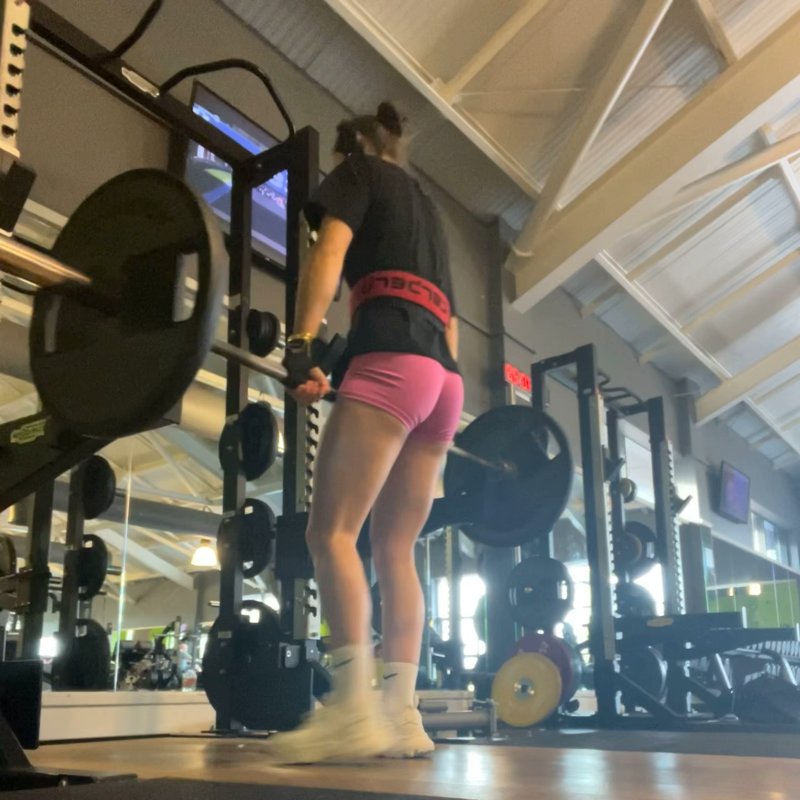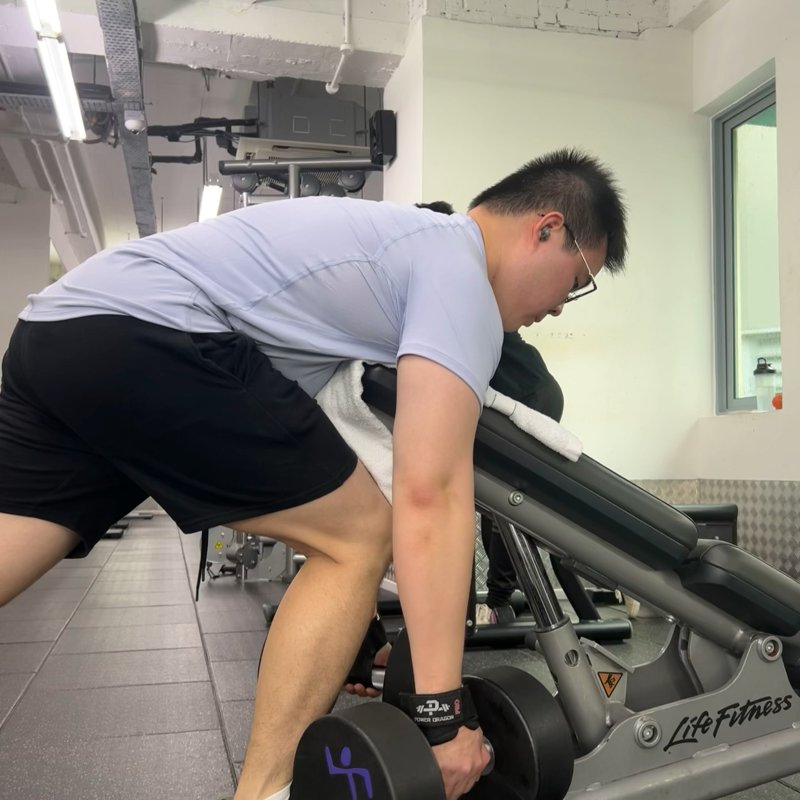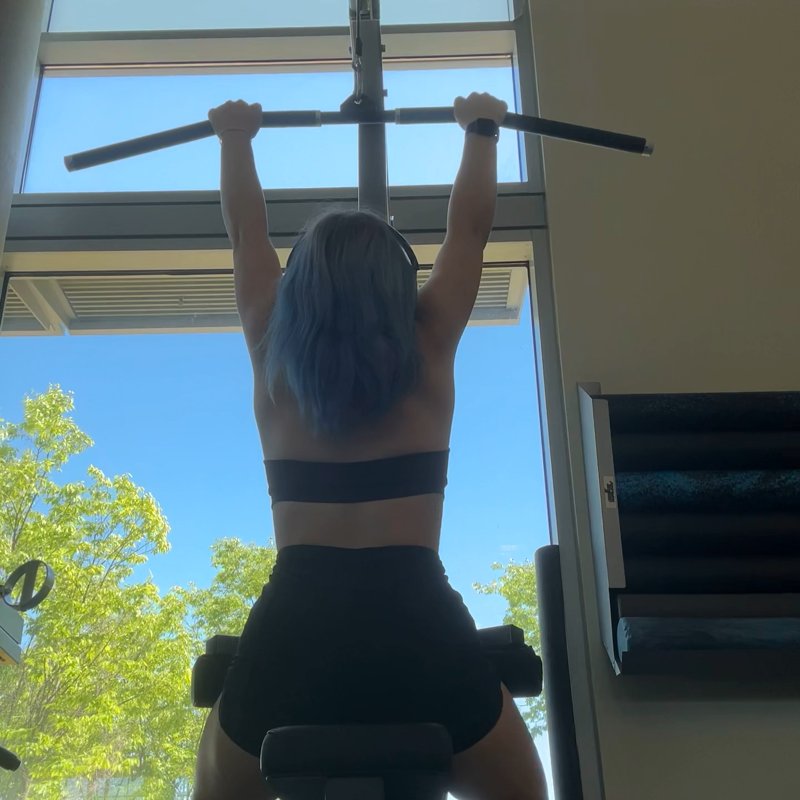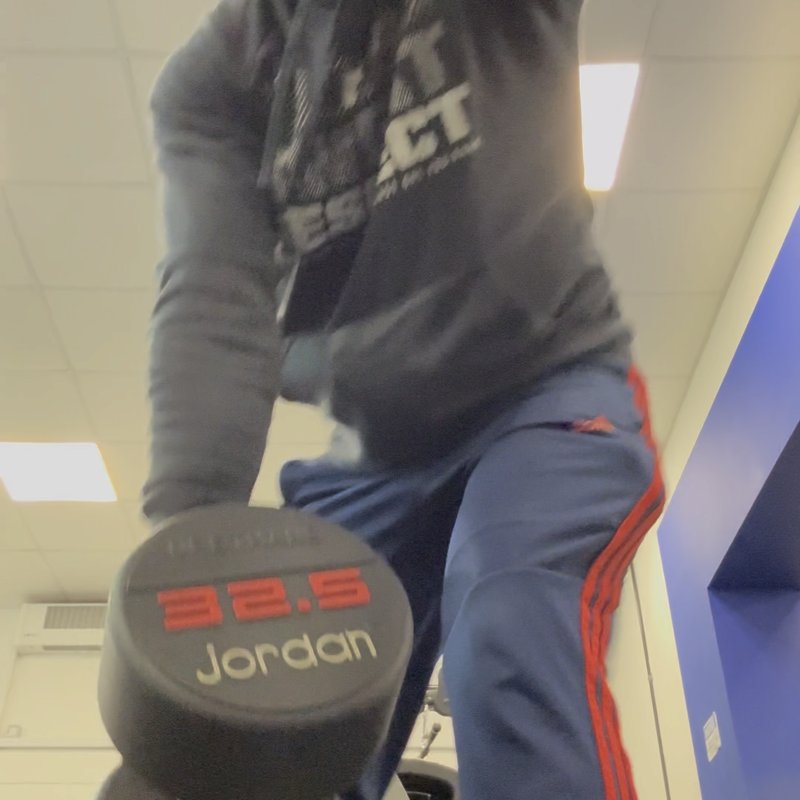T-Bar Row: The Ultimate Guide
The T-Bar Row is a compound back exercise performed using a landmine device or T-bar machine that targets the lats, middle back, and rear deltoids through a controlled rowing motion.

Quick Facts
Key Benefit
Targeted back development with stabilized body positioning
Primary Muscles
Lats, Rhomboids, Traps
Secondary Muscles
Abdominals, Biceps, Brachialis, Erector Spinae, Posterior Deltoids
Equipment
barbell
Difficulty
Intermediate
Type
Strength
In This Guide
Ready to master the T-Bar Row?
Track your progress, see improvements over time, and build strength consistently.
Download GravitusThe T-Bar Row stands as one of the most effective compound exercises for developing back thickness, width, and overall posterior chain strength. This versatile movement can be performed using either a specialized T-bar rowing machine or a barbell secured in a landmine attachment, with weight plates loaded on the free end.
What makes the T-Bar Row particularly valuable is its unique mechanics—the fixed pivot point creates a natural arc motion that matches the body's movement patterns while providing stability that allows for heavier loading than many free-weight rowing variations. The exercise primarily targets the latissimus dorsi, rhomboids, and trapezius muscles, but also engages the rear deltoids, biceps, and core stabilizers.
Whether your goal is to build a more aesthetic physique, improve posture, increase pulling strength, or enhance athletic performance, the T-Bar Row delivers exceptional results by allowing progressive overload in a joint-friendly manner. Its balance of stability and free-weight characteristics makes it suitable for both intermediate lifters developing their back muscles and advanced athletes looking to break through plateaus.
Benefits of the T-Bar Row
The T-Bar Row combines elements of both machine and free-weight exercises, offering unique advantages for back development and overall strength.
Targeted Back Development
The fixed pivot point and natural arc movement pattern allows for intense focus on the lats, rhomboids, and traps while minimizing assistance from momentum.
Balanced Muscle Activation
Engages both the upper and lower lats simultaneously, promoting proportional back development that contributes to the coveted V-taper physique.
Reduced Lower Back Stress
Compared to bent-over barbell rows, the T-Bar Row's design typically allows for a more supported torso position, reducing lumbar strain while still effectively targeting the back muscles.
Progressive Overload Potential
The stable platform and mechanical advantage makes adding weight plates straightforward, allowing for consistent strength progression over time.
Grip Strength Development
Whether using the neutral handle attachments or straddling the bar directly, the T-Bar Row challenges and improves grip strength and endurance.
Proper Form & Technique
Starting Position
- Stand straddling the bar with feet shoulder-width apart and firmly planted on the platform (for a T-bar machine) or on the floor (for a landmine setup).
- Bend at the hips and knees to grasp the handles or the bar itself, maintaining a neutral spine position throughout.
- Position your torso at approximately a 45-degree angle to the floor, with chest up and shoulders pulled back and down.
- Fully extend your arms while maintaining slight tension in your back muscles—don't allow your shoulders to round forward.
- Brace your core and establish a firm, stable base with your lower body.
Movement
- Initiate the movement by driving your elbows back and up, squeezing your shoulder blades together.
- Pull the weight toward your lower chest/upper abdomen in a controlled manner, keeping your elbows close to your body.
- At the top of the movement, focus on maximizing the contraction in your back muscles by squeezing your shoulder blades together.
- Hold the contracted position briefly (1-2 seconds) to enhance mind-muscle connection and maximize benefit.
Return
- Lower the weight back to the starting position in a controlled manner, maintaining tension in your back muscles.
- Allow your arms to fully extend without rounding your shoulders forward or losing your torso angle.
- Maintain core tension and proper posture throughout the eccentric (lowering) phase.
- Repeat for the desired number of repetitions, focusing on quality movement rather than momentum.
Key Form Tips
Torso Position
Maintain a consistent torso angle throughout the movement—avoid the tendency to stand more upright as you fatigue.
Elbow Path
Drive elbows back and slightly outward, rather than straight back, to maximize lat engagement.
Shoulder Positioning
Keep shoulders pulled back and down away from your ears throughout the exercise to optimize back muscle activation.
Breathing Pattern
Inhale during the lowering phase and exhale forcefully during the pulling phase to enhance core stability and power output.
Range of Motion
Prioritize a full range of motion with proper form over using heavier weights with compromised technique.
Muscles Worked
Primary Muscles
- lats: The largest back muscle spanning from your mid-back to your waist, the lats are the primary movers during the pulling motion and contribute significantly to back width.
- rhomboids: These muscles between your shoulder blades contract powerfully during the squeezing phase at the top of the movement, contributing to middle back thickness and posture.
- traps: The middle and lower portions of the trapezius work to retract and depress the shoulder blades during the pulling phase, enhancing upper back development.
Secondary Muscles
- posterior deltoids: The posterior shoulder muscles assist in the pulling movement, particularly when using a wider grip or pulling to a higher position on the torso.
- biceps: Your biceps act as secondary movers during any rowing movement, assisting the larger back muscles in flexing the elbow during the pull.
- brachialis: These elbow flexors, located in the upper arm and forearm respectively, assist in the pulling motion, especially when using a neutral grip.
- erector spinae: While not primary movers, these lower back muscles work isometrically to maintain your torso position throughout the exercise.
- abdominals: Your abdominals and obliques activate to stabilize your torso and resist rotation during the unilateral (one-sided) nature of the pull.
Common Mistakes and How to Fix Them
Using Excessive Body English
Rocking the torso or using momentum to swing the weight up reduces back muscle activation and increases injury risk. Fix by using a controlled tempo, potentially reducing the weight, and focusing on feeling the back muscles work through the full range of motion. Consider a 2-1-3 tempo (2 seconds up, 1 second squeeze, 3 seconds down) to eliminate momentum.
Incorrect Torso Angle
Either standing too upright (which shifts emphasis to the arms) or bending too far forward (which increases lower back stress). Maintain approximately a 45-degree angle between your torso and the floor throughout the movement. Use a mirror or have a training partner check your angle if possible.
Pulling with Arms Instead of Back
Focusing on elbow flexion rather than scapular retraction reduces back activation. Think of your hands as hooks and your arms as passive connectors—initiate the movement by driving your elbows back and squeezing your shoulder blades together, rather than curling the weight with your biceps.
Rounding the Lower Back
Allowing the lumbar spine to flex under load increases injury risk. Maintain a neutral spine by engaging your core, hinging at the hips, and keeping your chest up throughout the movement. If maintaining this position is difficult, consider using a chest-supported version of the exercise.
Insufficient Range of Motion
Not allowing full arm extension at the bottom or not pulling the bar close enough to the body at the top. Focus on achieving a complete stretch of the lats at the bottom position and a powerful contraction at the top, feeling the shoulder blades squeeze together with each repetition.
Flaring Elbows Excessively
Allowing the elbows to wing out too far from the body reduces lat engagement and increases shoulder strain. Keep your elbows relatively close to your sides during the pull, moving them back and slightly out rather than directly sideways.
Exercise Variations
Equipment Variations
-

Machine T-Bar Row
Performed on a dedicated T-bar row machine that includes a chest pad for torso support and handles at various grip widths, providing excellent stability and isolation.
-
Landmine T-Bar Row
Uses a barbell secured in a landmine attachment or corner, allowing for a greater range of motion and more freedom in body positioning compared to the machine version.
-
Meadows Row
A specialized T-bar row variation where you stand perpendicular to the bar and row with one arm, creating intense unilateral back activation with increased rotational stability demands.
Grip Variations
-

Close-Grip T-Bar Row
Hands positioned close together on a narrow handle to emphasize inner back thickness and bicep engagement.
-

Wide-Grip T-Bar Row
Using a wider handle attachment to increase activation of the upper back, particularly the trapezius and posterior deltoids.
-

Neutral-Grip T-Bar Row
Employing a parallel grip (palms facing each other) to optimize lat activation while reducing strain on the wrists and elbows.
-

Overhand-Grip T-Bar Row
Using a pronated grip (palms facing down) directly on the bar to increase upper back and rear deltoid engagement.
Support Variations
-

Chest-Supported T-Bar Row
Performing the exercise with the chest supported on an incline bench to minimize lower back fatigue and isolate the back muscles more effectively.
-

Single-Arm T-Bar Row
Using one arm at a time to address muscle imbalances and increase anti-rotational core demands.
Frequently Asked Questions
The T-Bar Row offers several unique advantages compared to other rowing variations. Unlike the barbell bent-over row, the fixed pivot point of the T-Bar creates a more natural arc of motion that follows the body's biomechanics, potentially reducing lower back stress. Compared to cable rows, the T-Bar typically allows heavier loading for strength development. The T-Bar also offers a middle ground between free-weight instability and machine stability—providing enough freedom to engage stabilizing muscles while offering sufficient support to focus on the target muscles. Additionally, the various handle attachments available with most T-Bar setups allow for greater grip variation than many other rowing exercises.
Whether to use lifting straps depends on your training goals. If back development is your primary objective and grip strength is limiting the weight you can handle or the number of repetitions you can complete, straps can be beneficial for ensuring your back muscles receive adequate stimulus. However, if grip strength development is also important to you, consider using straps only for your heaviest sets or after your grip has already been fatigued from previous exercises. A balanced approach might involve performing initial sets without straps to challenge grip strength, then adding straps for later sets to continue targeting the back muscles without grip limitation.
Primarily, you should feel the T-Bar Row working in your latissimus dorsi (the large muscles along the sides of your back), rhomboids (between your shoulder blades), and middle/lower trapezius. Depending on your grip width and pulling angle, you may also feel significant activation in your rear deltoids, biceps, and forearm muscles. If you're feeling the exercise predominantly in your arms rather than your back, focus on initiating the movement by retracting your shoulder blades rather than flexing your elbows. Maintaining a slight arch in your upper back while keeping your chest up can also help increase back muscle engagement.
The optimal rep and set scheme depends on your training goals. For strength development, 4-5 sets of 4-6 repetitions with heavier weights are effective. For muscle hypertrophy (growth), 3-4 sets of 8-12 repetitions with moderate weights typically yield the best results. For muscular endurance, consider 2-3 sets of 12-15 repetitions with lighter weights. Most well-designed programs include some variation of volume and intensity over time. A balanced approach might include both heavier strength-focused sets and moderate hypertrophy-focused sets across your training week. Regardless of your rep range, each repetition should be performed with control and proper form.
Absolutely. The most common alternative is the landmine T-Bar Row, which requires only a barbell and either a landmine attachment or a secure corner where you can place one end of the barbell. Simply load the free end of the barbell with weight plates, straddle the bar, and perform the rowing motion. You can use a close grip directly on the bar, loop a V-handle or rope attachment around the bar, or even use a towel wrapped around the bar if handles aren't available. Another DIY option is to secure one end of a barbell under a heavy dumbbell or in the corner of a room, though ensure it's stable before adding significant weight.
Video Demonstrations

Log in to watch video demonstrations
Login to Watch3 video demonstrations available
Tips from the Community
-

Make sure to bend your knees and keep your back straight and neck in line with your spine during the exercise.
Track your progress with Gravitus
Download Gravitus to log your workouts, track your progress, and join a community of fitness enthusiasts.

Helpful Resources
One Rep Max Calculator
Find your one rep max for any exercise without maximal testing. Essential for developing effective strength training programs.
Calculate 1RMWorkout Programs
Follow structured workout programs created by fitness professionals to maximize your strength and muscle gains.
View Programs




